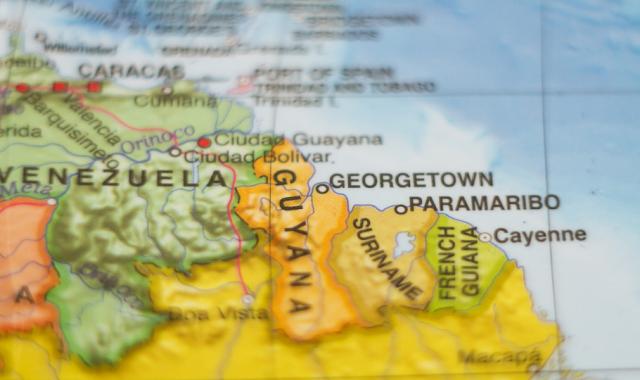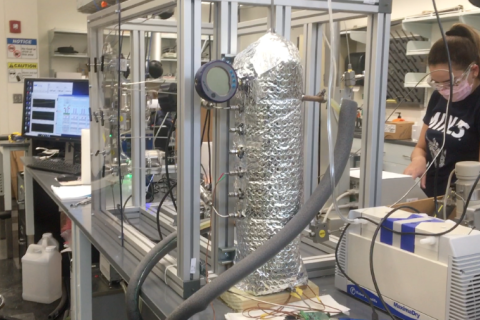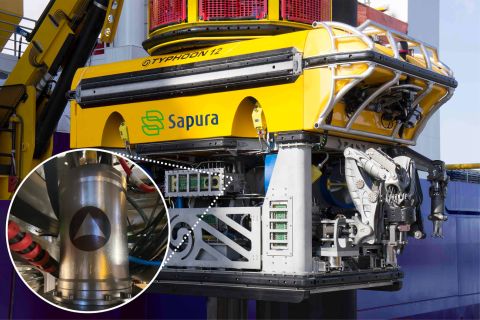
ExxonMobil Corp.’s (NYSE: XOM) successful streak on the Stabroek Block offshore Guyana has not lost steam with the supermajor reporting March 30 that it has stuck oil again—this time at its Snoek prospect, another stratigraphic trap.
The well, located about five miles southeast of ExxonMobil’s play-opening Liza discovery, hit more than 25 m (82 ft) of oil-bearing sandstone reservoirs. The well was drilled by the Stena Carron drillship to a depth of 5,175 m (16,978 ft) in 1,563 m (5,128 ft) of water on March 18, the company said in a news release.
The deepwater discovery is the second announced this year on the 26,800-sq-km Stabroek Block by ExxonMobil. The Payara-1 discovery, drilled in December northwest of the Liza discovery, hit more than 29 m (95 ft) of oil-bearing sandstone reservoirs.
Brad Heffern, an analyst at RBC Capital Markets, said that while no resource potential was provided, “we expect this to be a smaller discovery based on the net pay figure,” said in a March 30 report.
“XOM's geological model is clearly working offshore Guyana and we now expect a relatively high success rate on future exploration targets,” Heffern said. “The short distance to Liza likely means that Snoek can be developed in conjunction with one of the Liza phases.”
Steve Greenlee, president of ExxonMobil Exploration Co., called the latest discovery a sign of the company’s successes achieved in the technically complex play.
“As we continue to evaluate the full potential of the broader Stabroek Block, we are also taking the necessary steps to ensure the safe, cost-efficient and responsible development of this world-class resource, which can provide long-term, sustainable benefits to the people of Guyana,” Greenlee said in news release.
The discovery adds to evidence that the area offshore Guyana, a small South American country that sits between Venezuela and Suriname, is a budding exploration province.
Estimates show the Liza Field alone could hold recoverable resources of more than 1 billion oil-equivalent barrels with a deeper reservoir, encountered by the Liza-3 appraisal well, holding potential upside. Resources from the Payara discovery push the total discovered resources on the Stabroek Block to between 1.4- and 2 billion oil-equivalent barrels.
However, more could be forthcoming as the Stena Carron moves from the Snoek well back to the Liza Field, where it will drill a fourth appraisal well to evaluate the east flank of the field.
ExxonMobil has said it plans to develop resources discovered on the block in multiple phases using subsea wells tied back to an FPSO vessel. The initial development could produce up to 120,000 bbl/d.
“Front-end engineering and design work is under way and we anticipate reaching a final investment decision later this year. Start-up of Phase 1 is anticipated by 2020, fewer than five years after the initial discovery,” ExxonMobil CEO Darren Woods said during the company’s analyst meeting March 1. “Subsequent phases will incorporate experience from the initial development and allow for optimization as we continue to evaluate Liza and explore nearby prospects.”
Plans are also underway for the Pacuma test, which is underneath the Payara discovery, as well as additional seismic acquisitions.
“Capture of the large Kaieteur block to the north was approved by the government in February, bringing our total gross acreage across the Stabroek, Canje, and Kaieteur blocks to 11.4 million acres,” Woods said. “We have 3D seismic acquisition planned later this year on the Kaieteur block. We are encouraged by the results to date in Guyana and very excited about the future potential.
A final investment decision for Liza is anticipated sometime this year.
ExxonMobil subsidiary Esso Exploration and Production Guyana Ltd. is operator and holds 45% interest in the Stabroek Block. Hess Guyana Exploration Ltd. holds 30% interest and CNOOC Nexen Petroleum Guyana Ltd. holds 25% interest.
Velda Addison can be reached at vaddison@hartenergy.com.
Recommended Reading
2023-2025 Subsea Tieback Round-Up
2024-02-06 - Here's a look at subsea tieback projects across the globe. The first in a two-part series, this report highlights some of the subsea tiebacks scheduled to be online by 2025.
Going with the Flow: Universities, Operators Team on Flow Assurance Research
2024-03-05 - From Icy Waterfloods to Gas Lift Slugs, operators and researchers at Texas Tech University and the Colorado School of Mines are finding ways to optimize flow assurance, reduce costs and improve wells.
PGS Wins 3D Contract Offshore South Atlantic Margin
2024-04-08 - PGS said a Ramform Titan-class vessel is scheduled to commence mobilization in June.
Sapura Acquires Exail Rovins’ Nano Inertial Navigation System
2024-02-01 - Exail Rovins’ Nano Inertial Navigation System is designed to enhance Sapura’s subsea installment capabilities.
TGS Commences Multiclient 3D Seismic Project Offshore Malaysia
2024-04-03 - TGS said the Ramform Sovereign survey vessel was dispatched to the Penyu Basin in March.






